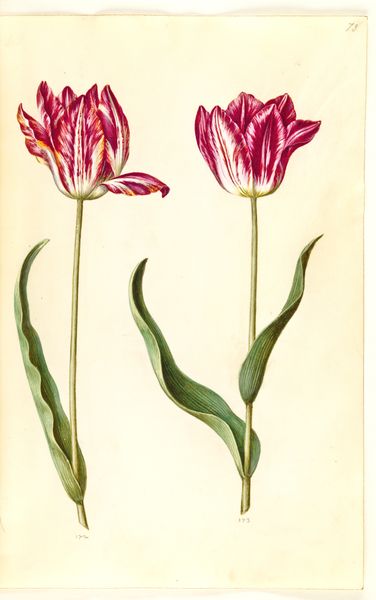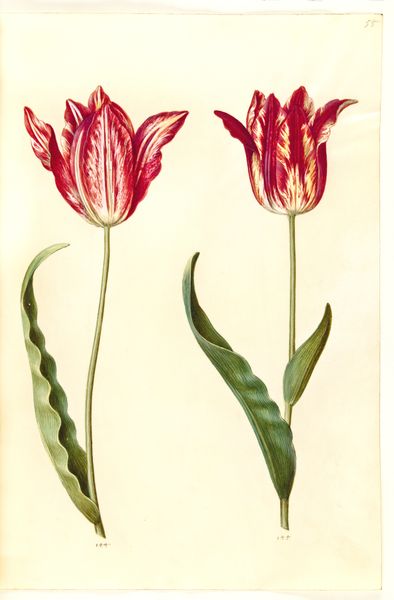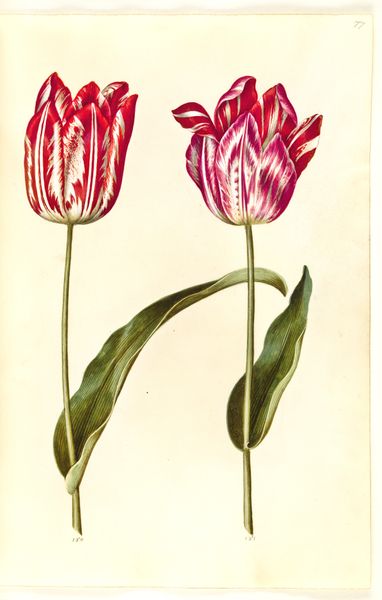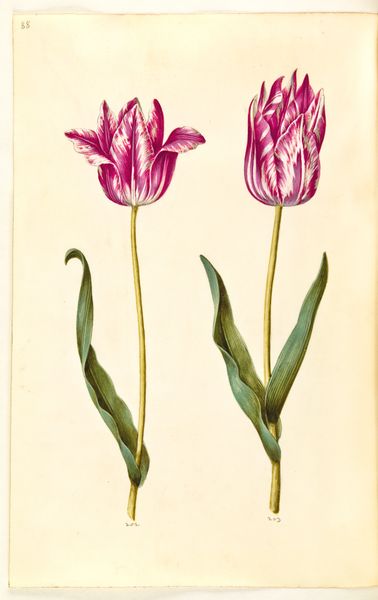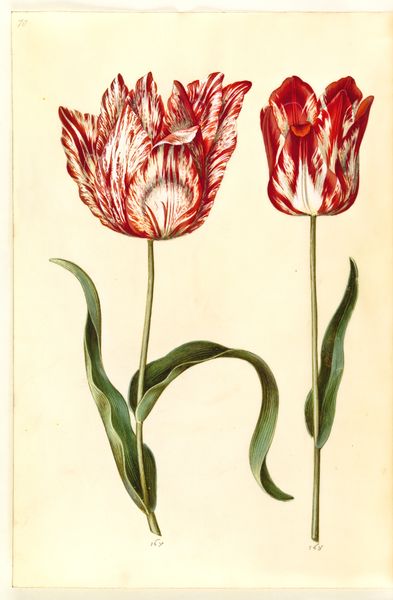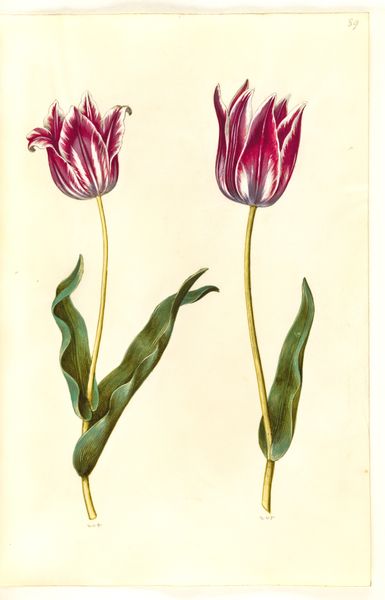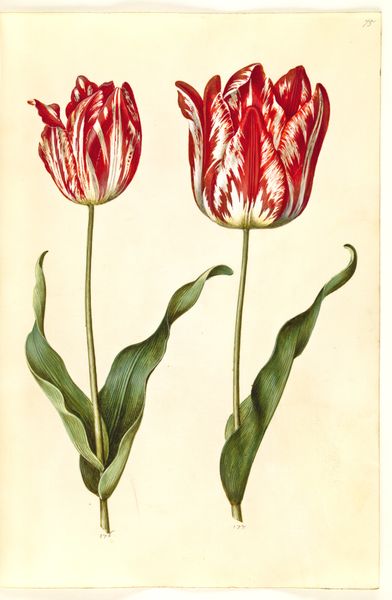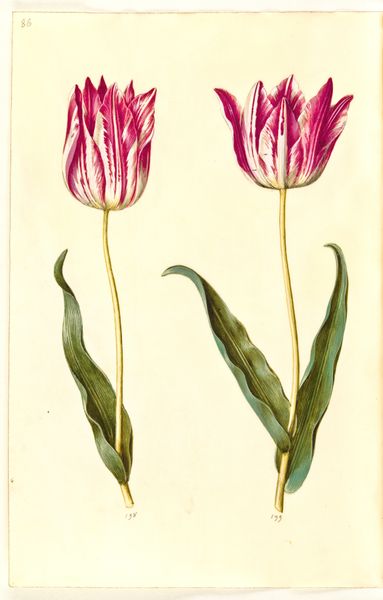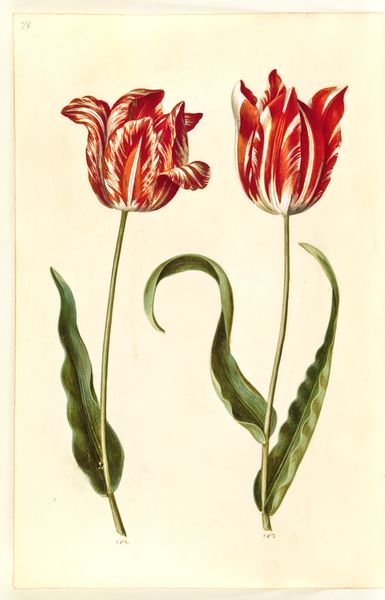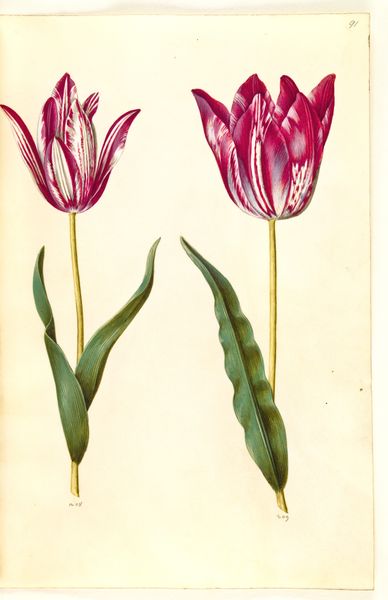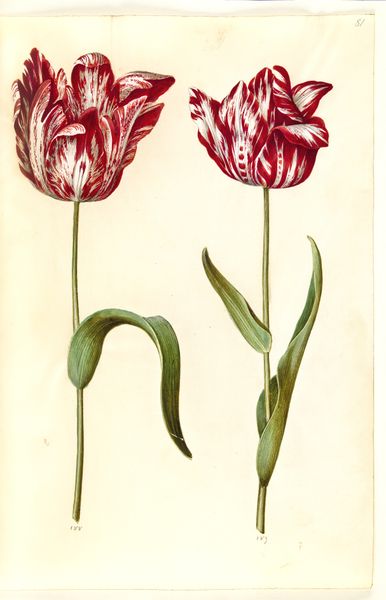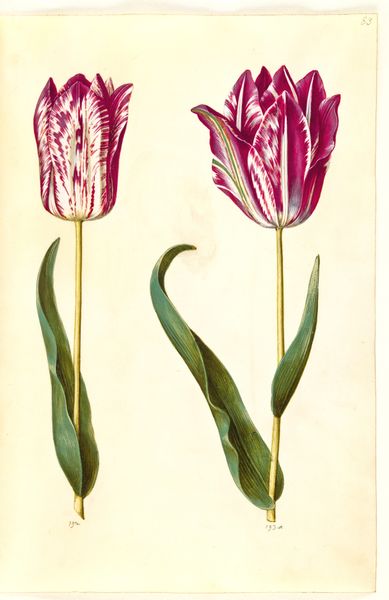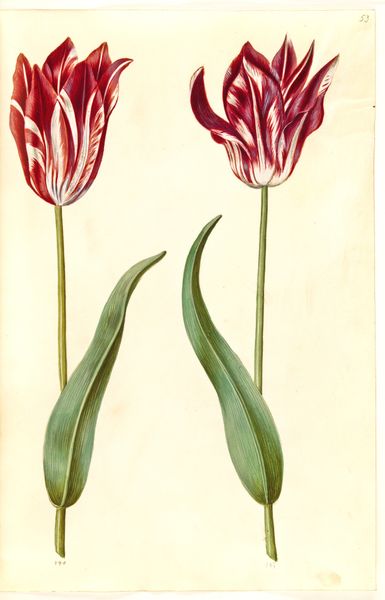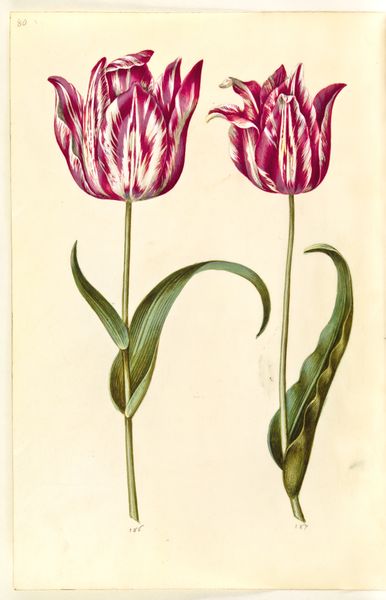
drawing, gouache
#
drawing
#
dutch-golden-age
#
gouache
#
botanical art
Dimensions: 375 mm (height) x 265 mm (width) x 85 mm (depth) (monteringsmaal), 358 mm (height) x 250 mm (width) (bladmaal)
Hans Simon Holtzbecker made this watercolor of a tulip sometime in the mid-17th century. At the time, tulips were not just flowers but emblems of economic speculation. The intense detail of Holtzbecker’s rendering is important. It seems to show a desire to capture and perhaps control the elusive qualities of the flower. Notice the textures of the petals, the way the light reflects, and the precision with which the red and white striations are depicted. The work is an example of highly refined painting skill, a painstaking approach that was very different from the speculative frenzy around the flower. While some were getting rich quick, artists like Holtzbecker were carefully observing. He was working in a very different timeframe, that of observation and patient execution. In that sense, the watercolor offers a quiet commentary on the madness of the market. It asks us to consider alternative modes of production and value, beyond boom and bust.
Comments
No comments
Be the first to comment and join the conversation on the ultimate creative platform.
